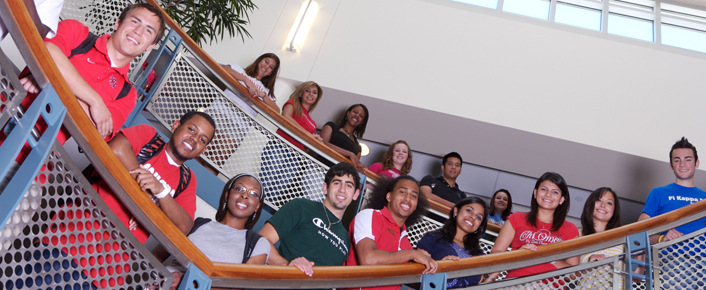News & Events

Taking it one semester at a time
The College’s CLASSmates program targets freshmen retention rate
“Look to your left. Look to your right. One of you will not graduate.”
The oft-told story of a university president or dean scaring incoming freshmen with this first-day-of-classes admonishment still holds grains of truth.
Student retention remains a challenge at undergraduate institutions nationwide, especially in the transition period from the first year to the second.
Just two-thirds of all freshmen students at U.S. two- and four-year colleges return to campus for a second year of college education, according to data compiled by ACT, the non-profit organization that administers the college admission test.
When the numbers are narrowed down to just four-year public universities, the rate is better with three-fourths of the freshman class reenrolling as sophomores.
Between 2008 and 2011, the College of Liberal Arts and Social Sciences steadily improved its first-year retention rate from 69 percent to 75 percent – the national average. But losing a fourth of first year students annually is a vexing problem that CLASS is determined to solve.
“Across the UH campus there is a movement to improve student success,” said Dr. David Phillips, who served as the interim CLASS associate dean for undergraduate studies in 2012. “We want to encourage students to bond, stay at the university, and graduate in six years or less.”
The College launched in Fall 2011 CLASSmates, a program designed to tackle the issue of first-year retention head on that demonstrated some success in its first year.
Instead of only concentrating on getting freshmen from one academic year to the next, the CLASSmates program focused on the interim step of helping students to stay in school from one semester to the next.
To do that, academic advisors crafted CLASSmates into a “cohort” program that allowed first-time-in-college students to come together as a community navigating their first university experiences together.
To foster camaraderie in that community, CLASSmates participants were offered the opportunity to enroll in CLASSmates-only sections of required English and Math courses.
“Prior to the creation of CLASSmates, as many as 250 students could potentially be in one of those classes,” said Chadi Lewis, an academic advisor helping to managing the program. “That can be intimidating to a recent high school graduate who is used to a class of 35 students.”
By taking small classes together, the students were able to form study groups and make friends – two factors critical to students succeeding in their adjustment to college-level studies and campus life. The program also encouraged them to form partnerships with and seek mentoring from the professors teaching the CLASSmates sections, another life skill that will help them throughout their academic careers and after.
Additionally, the CLASSmates students’ academic progress was closely monitored. If a professor, teaching assistant or advisors determined after the midterm exams were taken that a student was not on track to pass the course, additional tutoring, writing coaching or other academic support was offered to get the student back on track.
The efforts paid off.
Of the 142 students who began their freshman year as part of CLASSmates in Fall 2011, 126 came back to continue their studies in Spring 2012, giving the program an 89 percent retention rate.
Of the 16 students who left the College after only one semester, most of them transferred to another college within UH or to another university, said Ms. Lewis.
About 150 students are participating this fall semester in CLASSmates. This year’s cohort is enrolled in History and Political Science courses, instead of the Math and English classes.
“We made that change because many incoming freshmen have taken Advanced Placement English or Math courses in high school, which earned them college credit, so they do not need to take them again,” said Ms. Lewis.
Within the history class, a survey of U.S. history to 1877 taught by Dr. Kelly Hopkins, the CLASSmates are grouped into clusters of about 25 students and assigned to meet one day a week in those groups to discuss the week’s lesson.
Guest speakers from the Writing Center, Counseling and Psychological Services, Learning Support Services, and Scholarship and Financial Aid are scheduled to give brief presentations at the beginning of some of the classes during the first eight weeks of the semester.
This second dose of freshmen orientation information gives the students another chance to map out a plan for college success – and discuss that plan with other people having a similar experience at the same time.
“Early indications are that we are helping students in ways that will lead to long-term success,” said Dr. Phillips, now the College’s associate dean for faculty and research.
~Written by Monica G. Byars